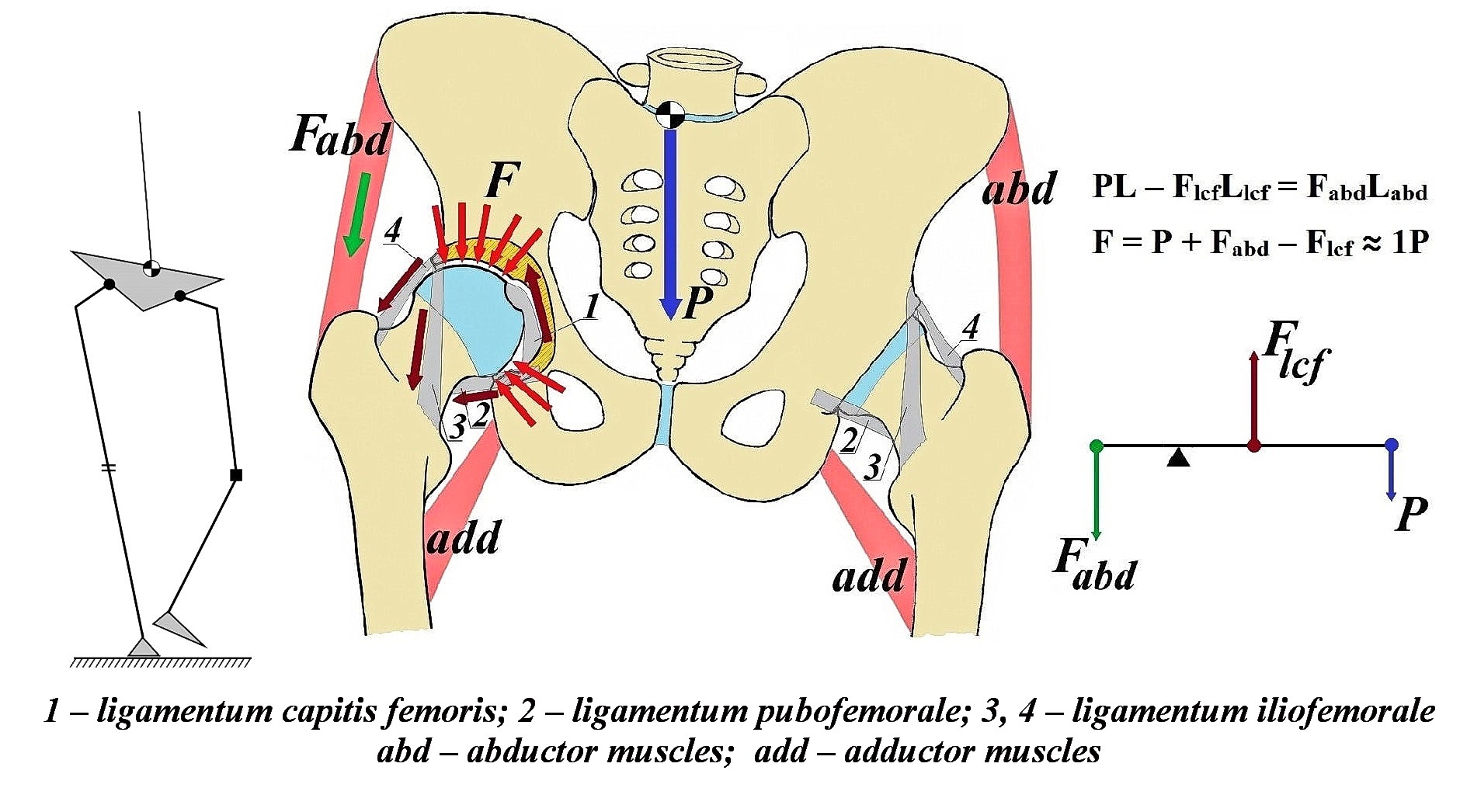Improving Postoperative Comfort and Increasing the Reliability of Hip Prostheses by Supplementing with Artificial Ligaments: Proof of Concept and Prototype Demonstration S.V. Arkhipov, Independent Researcher, Joensuu, Finland CONTENT [i] Abstract [ii] Introduction [iii] Materials and Methods [iv] Results and Discussion [v] Static Tests [vi] Dynamic Tests [vii] Prototype Fabrication and Testing [viii] Conclusion [ix] References [x] Application [i] Abstract The principle of operation of an experimental total hip endoprosthesis augmented with ligament analogs has been demonstrated in single-leg vertical stances and at the mid-stance phase of the single-support period of gait. The experiments were conducted on a specially designed mechatronic testing rig. The concept of the important role of the ligamentous apparatus is further illustrated by a set of demonstrative mechanical models. The...

The ligament of the head of femur, or round ligament, known as ligamentum capitis femoris in Latin, is a crucial element of the hip joint. The journal discusses its role, anatomy, development, pathology, classifications, treatment, diagnosis, synonyms, experiments, history of study, and the application of research results in veterinary science and biomechanics. It also collects and analyzes scientific research, images and intriguing facts about this element. THIS IS THE BIRTHPLACE OF INNOVATION!

Comments
Post a Comment